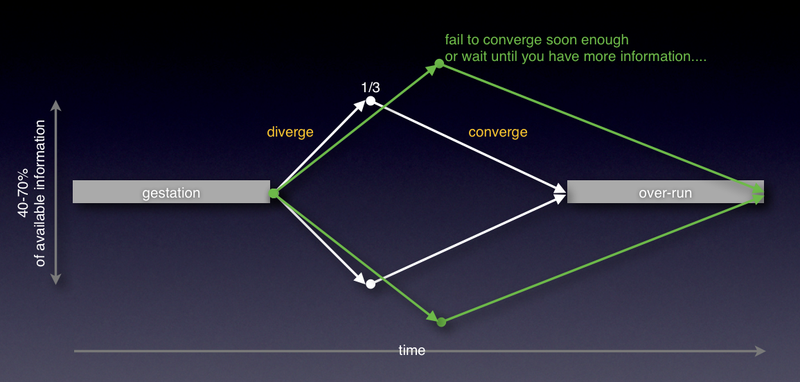Roughly right vs exactly wrong
/Roughly-right curve
A core principle of fast-time-to-market thinking is to know when to make a decision. Time is lost during "decision-churn" while teams attempt to gather "enough" information to make a decision. Their reasoning is that they want to be "right" and therefore, in the process, take a long time to gather the data in order to be right.
On the other hand, fast teams know that speed is more important and that small incremental decisions, made quickly, are better than big slow decisions.
They know that fast incremental decisions can be refined over time and adjusted, while long draw out decision-churn means that the decision has to be "right" since so much time was consumed in the process. Colin Powell described this in his Lessons in Leadership, specifically Lesson 15, Laws of Instinct, he said "once the information is in the 40 to 70 range, go with your gut. "We have observed the same behavior with fast teams.
Above, the diverging activity that teams go through during product definition. If they wait too long to converge, they slip the schedule and cause over-run. We've observed this on very long duration projects where the diverge/converge cycle occurs many times because the product needs to be redefined due to the delay in its release. The cycle just keeps extending the overall duration of the project. This is typical of 2-4 year development cycles where atrophy sets in.
The concept can be applied to any decision though, not just the product development process. Decision-churn consumes lots of time and the time trade-off usually does not improve the quality of the decision. Fast teams know it is better to be roughly right, than exactly wrong.
Also see:


